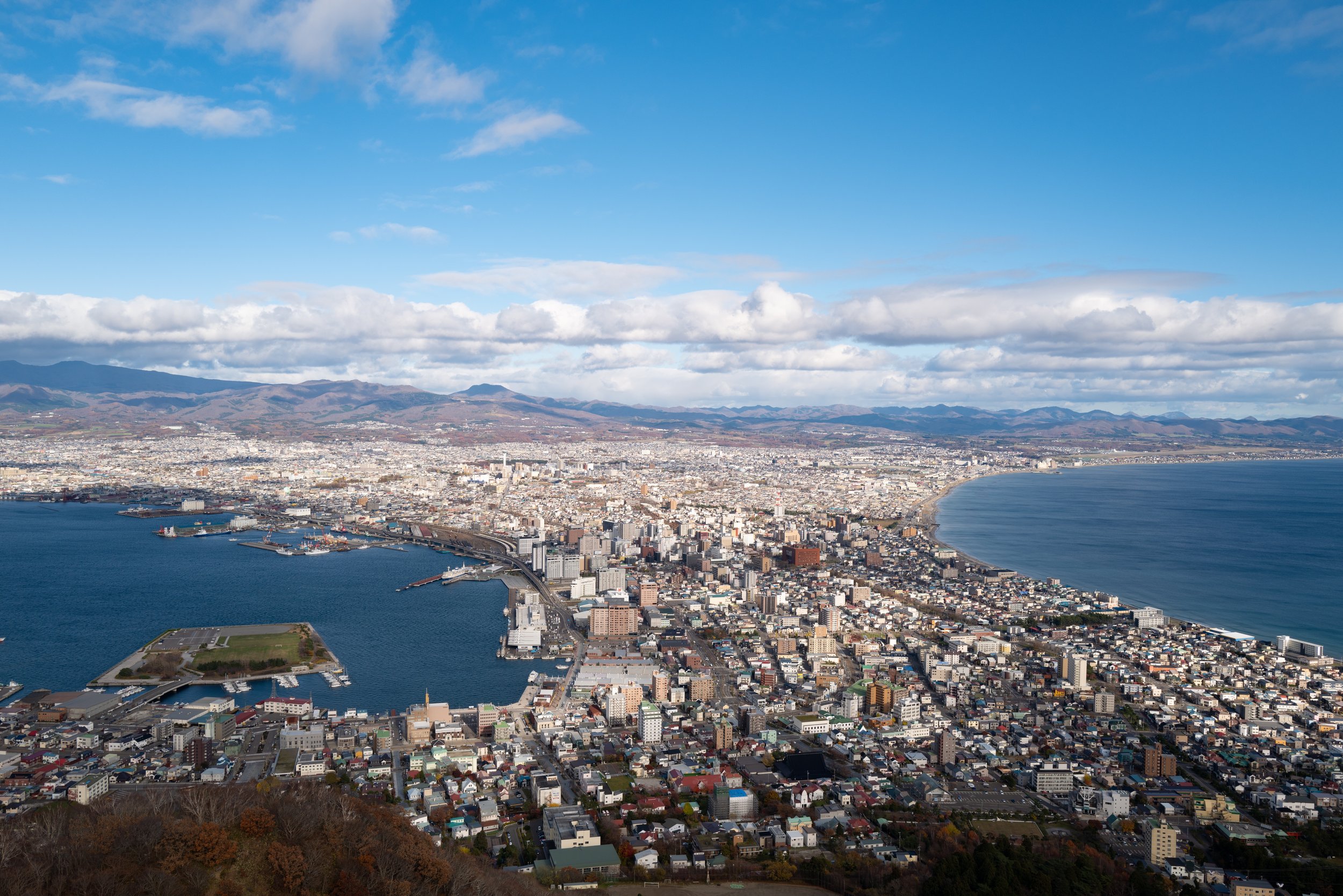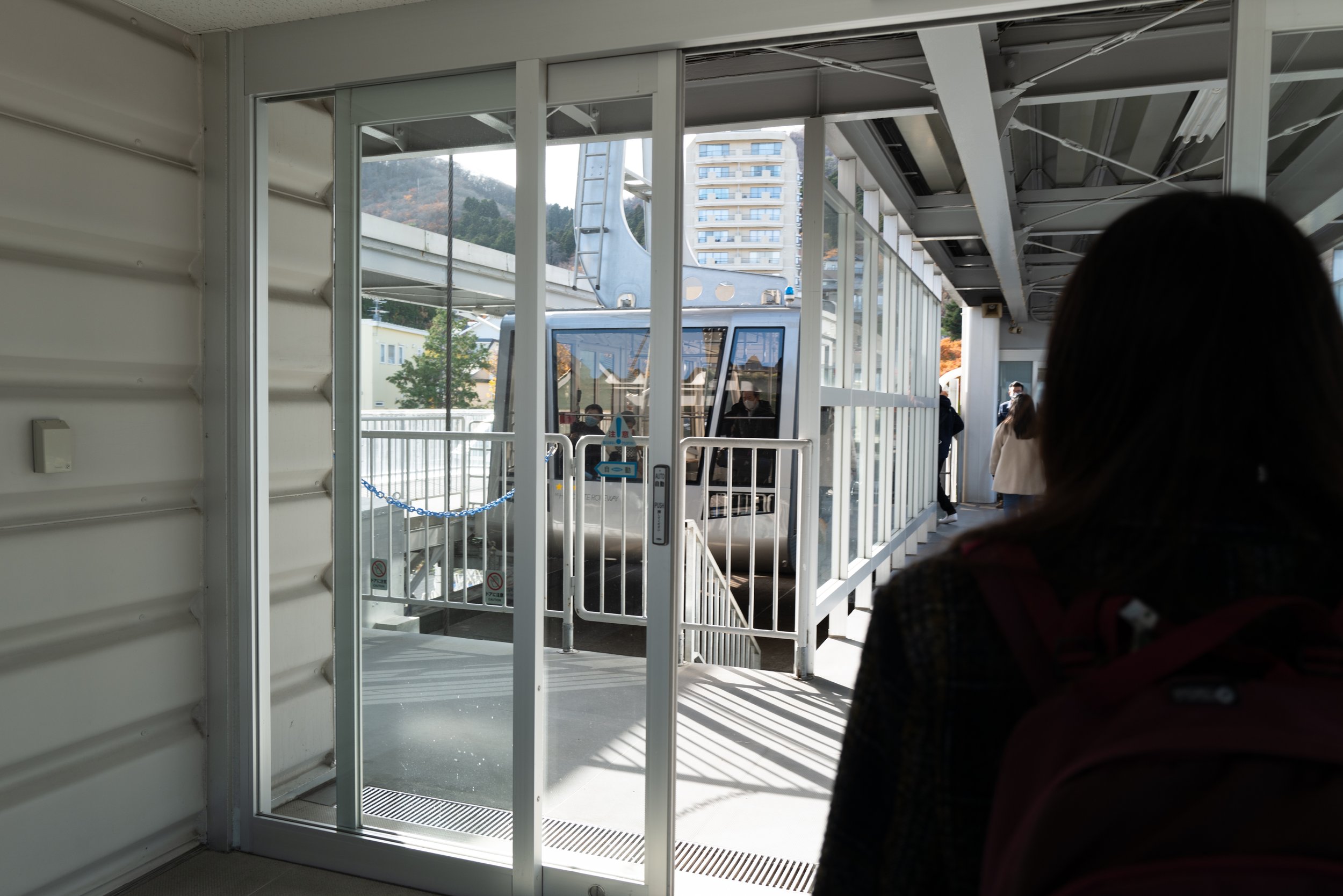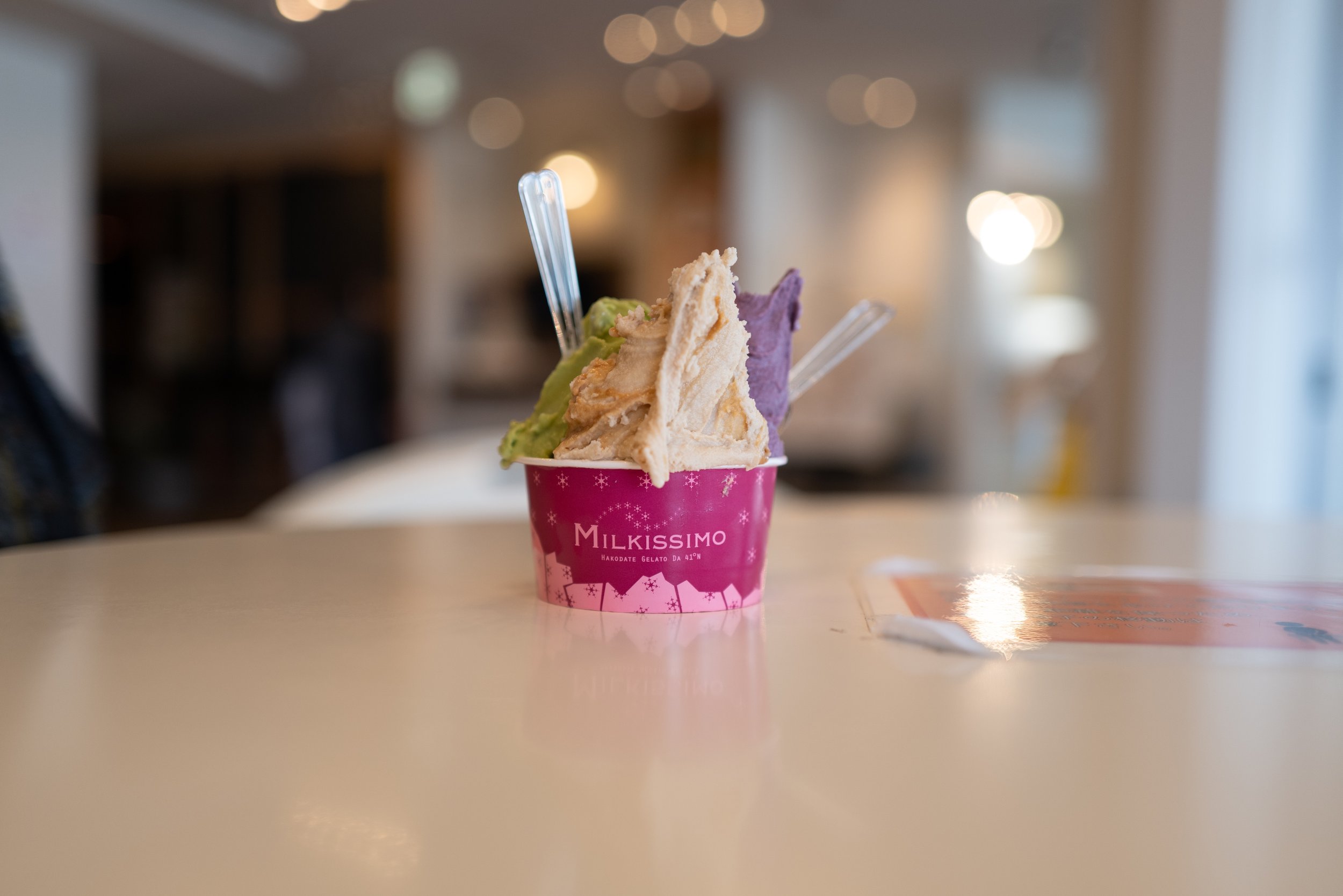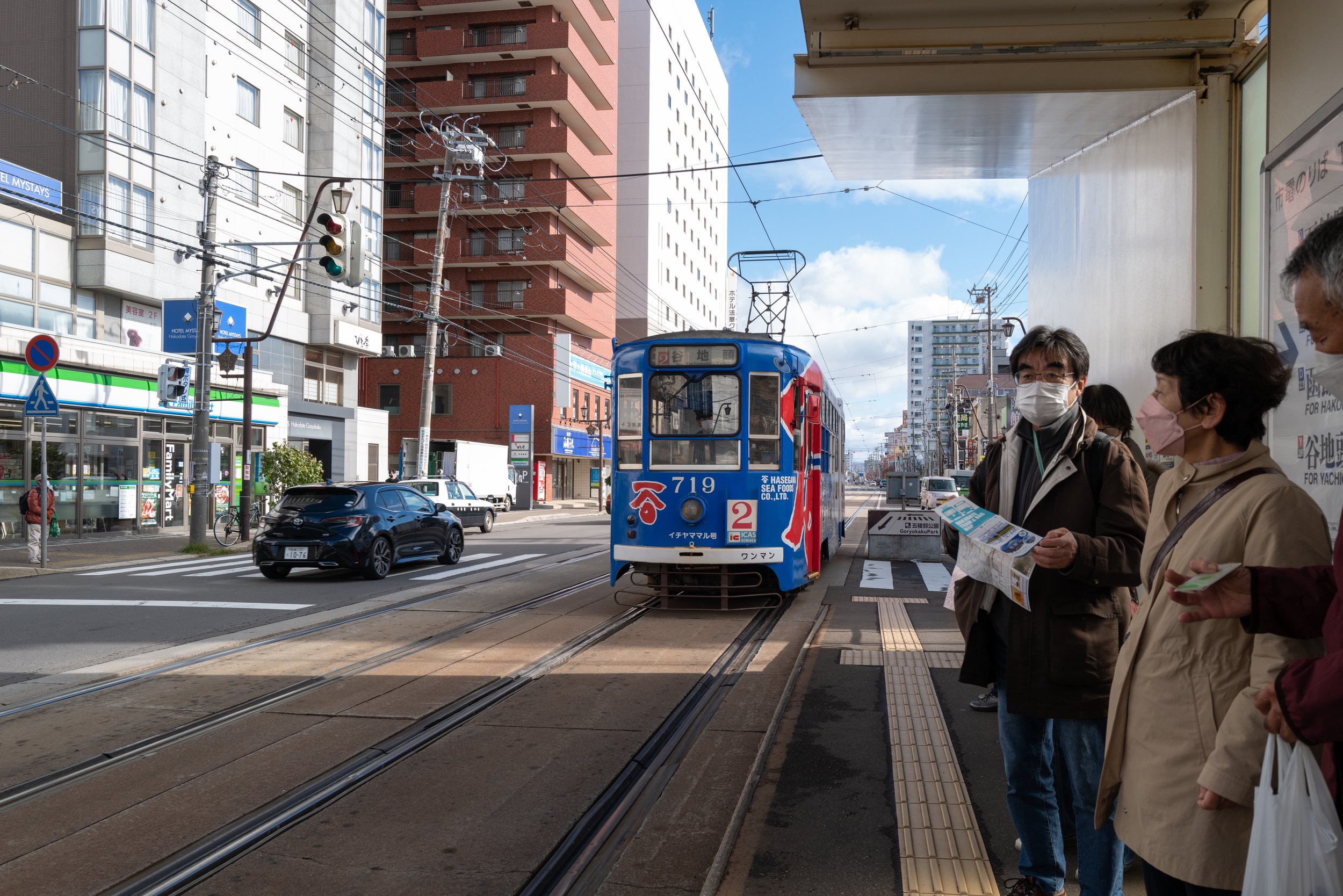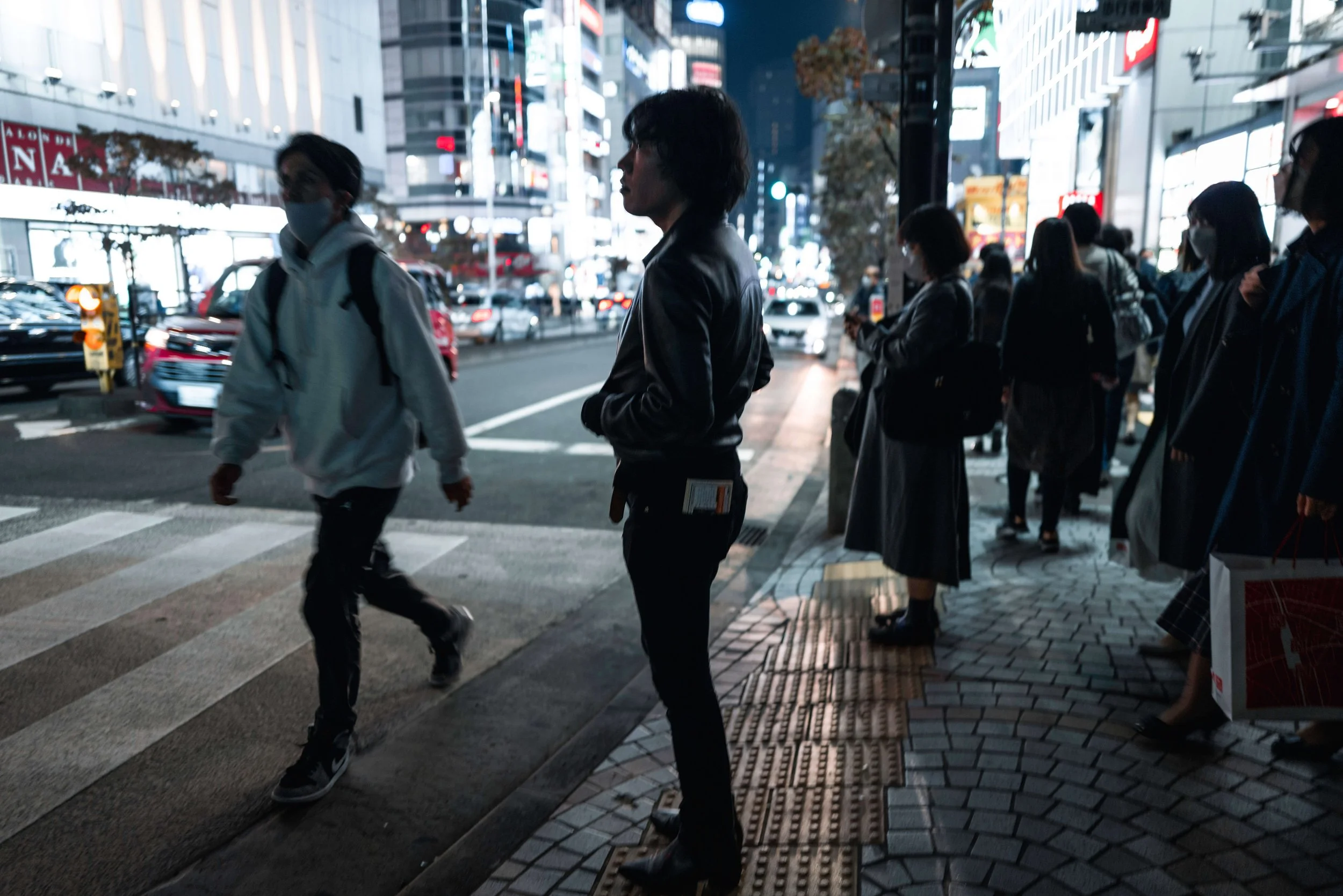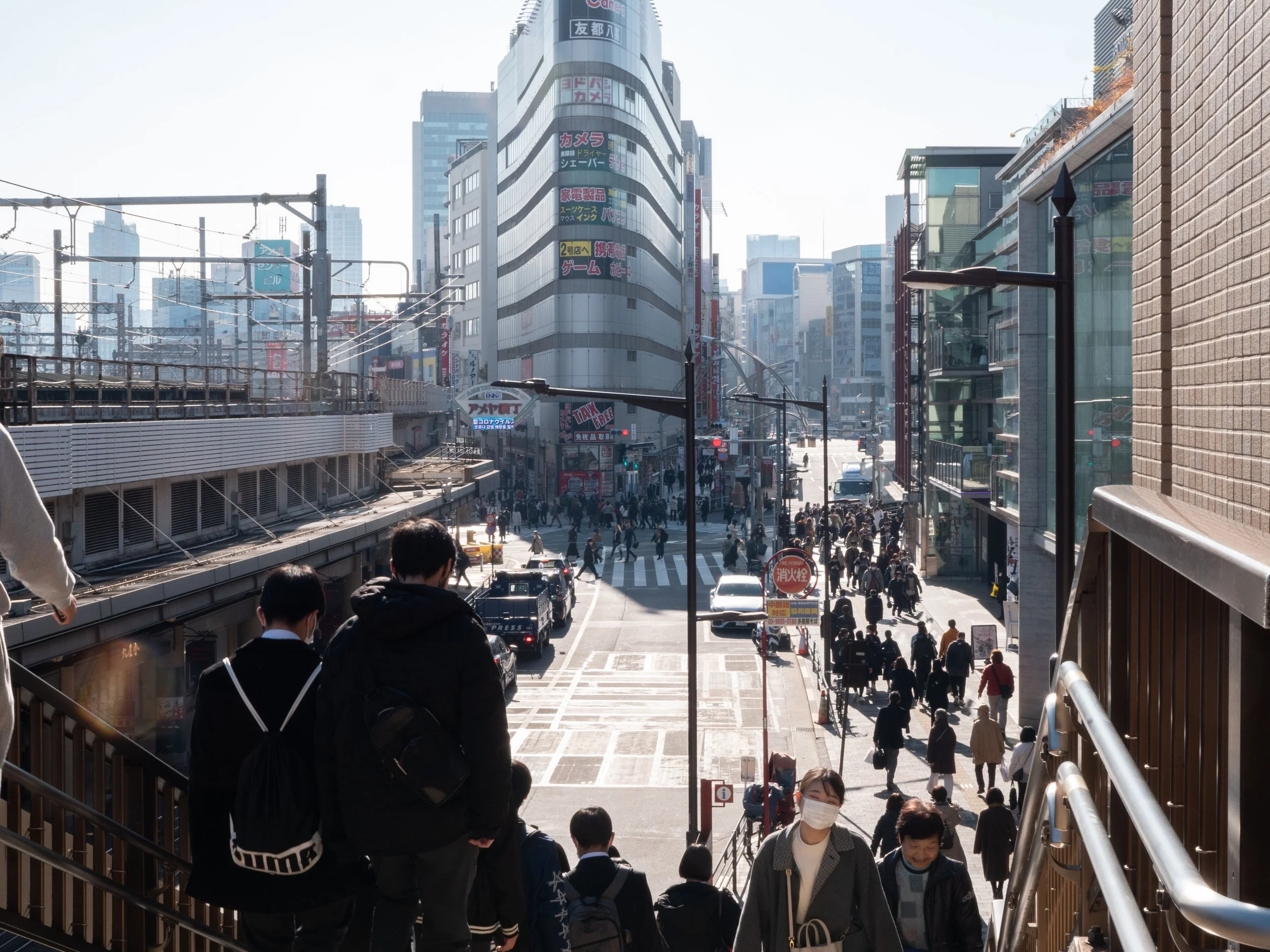
Hakodate
First Japanese port cities to be opened to international trade after the country's era of isolation
Hakodate (函館) is the third largest city in Hokkaido, and it is located on the southern tip of the island. Hakodate is best known for its spectacular views from Mount Hakodate and its delicious fresh seafood.
It was one of the first Japanese port cities to be opened to international trade after the country's era of isolation, Hakodate has undergone considerable foreign influence, and the former residential district of the foreign population and a Western-style fort are among its main tourist attractions.
How to get to Hakodate
JR Train (Shinkansen) + JR Hakodate Liner
From Tokyo, you take the Shinkansen on the Tohoku line to Shin-Hakodate-Hokuto (4 hours and 20 minutes). From there, you take the JR Hakodate Liner train (15 minutes). The one-way ticket costs 23760 yen, and there are only reserved seats (on the Shinkansen). These trains are included in the Japan Rail Pass.
Ltd. Hokuto Express
If you are in Sapporo, take the Limited Express Hokuto or Super Hokuto train. This train trip is long 3 hours and 40 minutes, and costs 8910 yen (non-reserved seat).
This train ticket is included in the "Japan Rail Pass".
Air
The city is served by Hakodate Airport. There are daily connections to Haneda Airport (Tokyo) by ANA and JAL airlines from 13000 yen. The flight takes about 80 minutes. The airport is then connected by the Hakodate Teisan Bus (20 minutes - 450 Yen) or by the Hakodate Bus line bus (30 minutes - 300 Yen)
How to get around Hakodate
Streetcar
The most convenient way to get around Hakodate is by streetcar, which reaches the main tourist spots.
A single ticket costs 210 to 260 yen depending on the distance traveled.
There are 2 streetcar lines, 2 and 5, which share much of the route.
A day pass can be purchased at the cost of 600 yen.
You can use IC Cards such as Pasmo, Suica, and Icoca (and all other compatible ones) to pay for a single ride.
Buses
There are buses that cover the main areas of the city. The single ride costs 210 yen.
There are 1- and 2-day passes costing 1,000 and 1,700 yen and also include buses.
You can use IC Cards such as Pasmo, Suica, and Icoca (and all other compatible ones) to pay for a single ride.
What to see in Hakodate
Hakodate is situated between two bays. From the top part of the Hakodate mountain, you can have a spectacular view of the city, especially at night.
Mount Hakodate
Mount Hakodate (Hakodateyama) is a 334-meter-high forested mountain at the southern end of the peninsula where much of downtown Hakodate is located. On clear days and in the evening, the view from the mountain is spectacular and is among the top three night views in Japan.
Goryokaku Fort
Goryokaku Fort is a star-shaped Western-style citadel that was built in the last moment of the Edo period with the purpose of defending Hakodate city against the imperialist threat posed by Western countries' powers.
A few years later, the fort became the site of a civil war between the shogunate army and the superior troops of the newly established Meiji government.
Morning market
The Hakodate Morning Market (函館 朝 市, Hakodate Asaichi) is held daily from 5:00 a.m. (6:00 a.m. during winter) to noon, a short walk from Hakodate JR Station. The market area covers about four city blocks.
Products for sale are basically various types of fresh seafood, such as crabs (kani), salmon roe (ikura), and sea urchins (uni), as well as fresh products like melons. There are many restaurants in the market area, offering fresh seafood breakfasts such as uni-ikura domburi.
Motomachi
The port of Hakodate was one of the first in Japan, to be opened to foreign trade in 1854 after Japan's era of isolation ended. As a result, many traders from Russia, China, and Western countries moved to Hakodate. Motomachi, at the foot of Hakodate Mountain, became a favorite district for new foreign residents.
There are still many "foreign-looking" buildings in the area. Among the most famous are the Russian Orthodox Church, the old British Consulate, the Chinese Memorial Hall, the former prefectural government branch building, and the old Hakodate Public Hall.
Kanemori Red Brick Department Store
The port of Hakodate was among the first Japanese ports to be opened to international trade toward the end of the Edo period (1600-1867). Several red brick warehouses survive on the waterfront in Hakodate Bay and have recently been renovated into an attractive complex of stores, restaurants, and entertainment.
In addition to a typical range of souvenir, fashion, interior, and sweet stores, the complex also features a restaurant, a brewery, a wedding chapel, and sightseeing cruises of the bay.
Yunokawa Onsen
There are several hotels and spas that offer spa spaces, but if you want, you can dip your feet in Hakodate's thermal waters for free.
Onuma "Quasi" National Park (Onuma Koen)
Called "Quasi National Park" and located just 20 km at the north of Hakodate city, Onuma Park (大沼 公園, Ōnuma Kōen) is well known for its picturesque lakes dotted with islands and the majestic volcano, Mount Komagatake.
Onuma Park can easily be visited on a day trip from Hakodate or during a stop on a trip between Hakodate and Sapporo because most of the trains that connect the two cities stop at Onuma Koen Station, the central train station.
The most beautiful area of the park lies between the two lakes Onuma (in Japanese, it means large lake) and Konuma (in Japanese language, small lake) and can be explored entirely on foot. Walking trails allow you to explore the peninsulas and lake islands, many of which are connected by small bridges, in easy 15-60 minute walks.
It is also possible to rent bicycles (500 yen/hour, 1000 yen/day). A bicycle route leads around Lake Onuma (about 10 kilometers), but it follows the main road rather than the lakeshore for most of the way. It is still a nice way to explore the area.
Also, during warmer seasons, boat tours are offered every 40 minutes, lasting about 30 minutes (1120 yen per person). Other activities to enjoy include canoeing, tennis, golf, fishing, and camping.
A street view leading down towards a body of water with buildings and mountains in the background. The street is flanked by leafless trees and buildings, with some parked cars and a construction truck on the right.
A two-story light blue wooden building with large windows and a small rooftop shop awning, situated on a paved street with a woman in a black coat walking nearby.
A woman with a backpack walking past a light blue, two-story wooden house with black doors and windows on a sidewalk in a neighborhood.
Old, weathered building with peeling walls, iron shutters on windows, and a beige privacy fence in front.
A woman with a pink face mask, black camera, plaid coat, and purple backpack standing next to a colorful clown statue outside a restaurant with bright yellow and red signs in Asian characters, and menus displayed on a board.
Aerial view of a coastal city with a bay, beachfront, numerous buildings, and distant mountains under a partly cloudy sky.
Photo of a playful cartoon gondola ride with cartoon characters and a person’s face inserted into one of the characters, smiling. The cartoon characters have large, expressive features and are on a gondola with a scenic backdrop, with Japanese text and logos at the bottom.
A high vantage view of a coastal city with numerous buildings, a beach, the ocean, and distant mountains under partly cloudy skies. Part of a Ferris wheel structure is visible in the foreground.
A smiling young woman and man with backpacks standing close together on a tower observation deck with a city, harbor, and ocean in the background.
An aerial cable car cabin floating over a city with a body of water, mountains in the background, and green forested areas below.
View from a cable car looking over a coastal city with buildings, roads, and a large body of water, with mountains in the distance and a person in the foreground.
A panoramic view of a city with a harbor, mountains in the background, and partly cloudy blue sky.
View of a mountain with a cable car line, buildings, trees with autumn leaves, and partly cloudy sky.
A street scene in Japan showing a tram station with tracks, a digital clock, and a shelter. There are buildings, power lines, and a few pedestrians waiting for the tram on a sunny day.
A house covered with overgrown vines and leaves, located at a street corner with surrounding buildings and a street sign.
View of a cable car station with a cable car outside, and several people waiting inside.
A person holding a stamp card with red stamps and Japanese text, near a vending machine or ticket kiosk.
Residential front door with glass panels, surrounded by green ivy, with a white wall, a mailbox, and exterior pipes.
Inside a bus with several seated passengers, mostly wearing face masks. A young child in a blue jacket stands near the seats. Bright sunlight streams through large windows.
A person serving ice cream from a display case filled with various flavors at an ice cream shop, with their hand using a scoop and wearing a glove. The ice cream flavors include vanilla, chocolate, mint, and others, with small labels indicating the flavors.
A cup of different flavored gelato with two plastic spoons on top, in a pink cup with the word 'Milkissimo' on it, sitting on a light-colored table inside a brightly lit room.
A young woman with dark hair and bangs, wearing a dark plaid jacket and black turtleneck, sitting at a white table in a brightly lit cafe, eating ice cream from a pink cup with a spoon.
A blue streetcar at a city tram station with pedestrians waiting, some holding maps, in an urban area with modern buildings and traffic lights.
Aerial view of a historic Japanese castle surrounded by water, with a cityscape and mountains in the background. The castle has scenic gardens with trees in autumn colors.
A woman in a green quilted jacket and gray face mask ordering ice cream at a gelato shop, with a staff member wearing a white face mask behind the counter.
Cafe counter with handwritten menu signs and an employee in the background, partially obscured, behind a clear plastic barrier.
People inside a modern observation deck with large angled glass windows showing a city and mountains outside.
A colorful Japanese restaurant facade with yellow signs advertising soft cream, angels chatter, hamburger, curry, and spaghetti. There are ice cream cone decorations above the signs. Two people are sitting on a bench outside under a tree with autumn leaves, and there are various posters and signs on the storefront.
A sign advertising Hakodate Gelato at Milkissimo, featuring images of various gelato flavors, with two people wearing masks inside the store.
People waiting in line and sitting at tables in front of a gelato shop named 'Milkissimo'.
A woman with long dark hair in a beige coat looking out from an observation deck with large glass windows over a cityscape and water body, with cloudy sky overhead.
Book Giorgio + Koharu - Japan Tour
14 days of Japanese experiences with native japanese guide
Places to visit: the futuristic Tokyo, traditional Japan Kyoto, natural and wild Hokkaido and Okinawa paradise islands.
Food and drinking experiences: Ramen, Soba, Sushi, Isakaya drinking bar, Karaoke
Traditional Japanese experiences: Shodo Japanese calligraphy, Ikebana flower lesson, fortune telling.
Explore Japanese destinations
JAPAN
Tokyo
National Museum of Western Art
Transports
Suggestions:
Cherry Blossoms - Sakura Hanami
HOKKAIDO
OTHER PLACES:
OKINAWA





